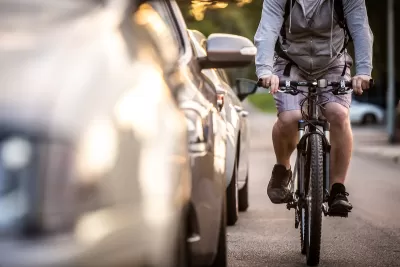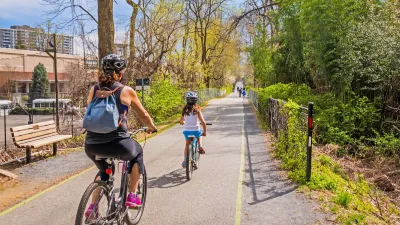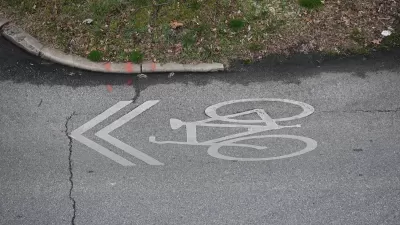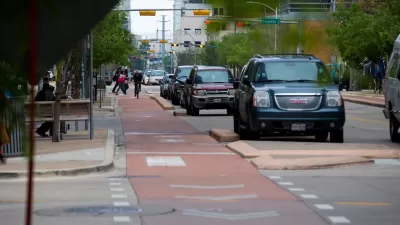The technology could enable cars and bikes to communicate and reduce collisions.

In an opinion piece in Streetsblog USA, Laszlo Virag describes how ‘vehicle-to-everything’ technology, known as V2X, could improve traffic safety and help people on bikes and in cars ‘talk’ to each other. “The principle of V2X communication is very simple: ten times a second, cars send out invisible radio signals that broadcast the vehicle’s size, current position, speed and direction.”
Expanding the technology to bikes, Virag argues, could “provide critical protection for their riders by prompting V2X cars to display a warning right in front of the driver when a cyclist is about to cross their path.”
Virag adds that the technology could be installed at intersections and on other infrastructure and vehicles. “Best of all, all that anonymized data can then be recorded and aggregated, after which it can be shared with cities to help plan new bike and pedestrian infrastructure, or with navigation apps to give vulnerable road users more data on which routes safe.”
Virag cautions that “none of this technology replaces the need for separated bike lanes — and no cyclist should be blamed for a crash simply because they don’t have a V2X enabled bike that can “talk” to a V2X enabled driver.” But the technology could help improve safety in places with little bike infrastructure. “As cities catch up on infrastructure, even a very low level of V2X penetration can give city leaders the detailed data they need on traffic flow, traffic patterns, and even near-miss incidents.”
FULL STORY: Opinion: How Letting Bikes ‘Talk’ To Cars Can Save Lives

Planetizen Federal Action Tracker
A weekly monitor of how Trump’s orders and actions are impacting planners and planning in America.

The Simple Legislative Tool Transforming Vacant Downtowns
In California, Michigan and Georgia, an easy win is bringing dollars — and delight — back to city centers.

San Francisco's School District Spent $105M To Build Affordable Housing for Teachers — And That's Just the Beginning
SFUSD joins a growing list of school districts using their land holdings to address housing affordability challenges faced by their own employees.

In More Metros Than You’d Think, Suburbs are Now More Expensive Than the City
If you're moving to the burbs to save on square footage, data shows you should think again.

The States Losing Rural Delivery Rooms at an Alarming Pace
In some states, as few as 9% of rural hospitals still deliver babies. As a result, rising pre-term births, no adequate pre-term care and "harrowing" close calls are a growing reality.

The Small South Asian Republic Going all in on EVs
Thanks to one simple policy change less than five years ago, 65% of new cars in this Himalayan country are now electric.
Urban Design for Planners 1: Software Tools
This six-course series explores essential urban design concepts using open source software and equips planners with the tools they need to participate fully in the urban design process.
Planning for Universal Design
Learn the tools for implementing Universal Design in planning regulations.
Smith Gee Studio
City of Charlotte
City of Camden Redevelopment Agency
City of Astoria
Transportation Research & Education Center (TREC) at Portland State University
US High Speed Rail Association
City of Camden Redevelopment Agency
Municipality of Princeton (NJ)





























